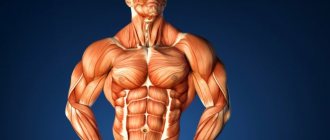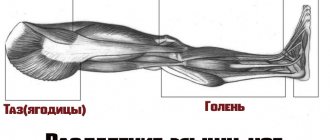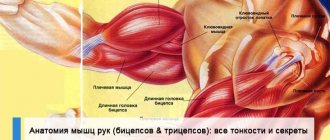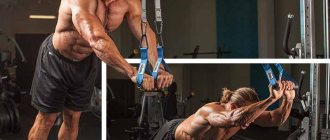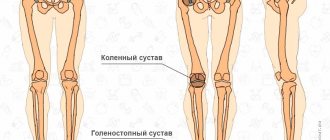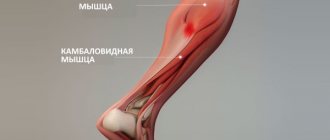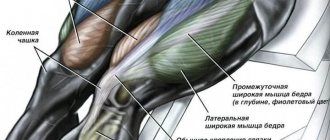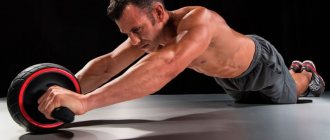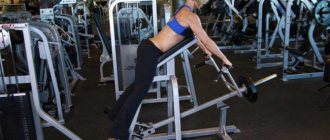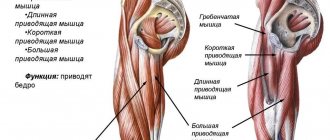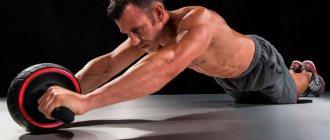- August 1, 2018
- Health
- Nikita Novikov
The anatomy of the abdominal muscles is a very interesting topic that interests many novice athletes. If you are reading these lines now, then we dare to assume that you are also one of them. In this case, especially for you and people like you, we have prepared a publication that tells in detail about the human abs, its functions, and also why it needs to be pumped up. Here you will find many interesting facts that will help you in your training.
Rectus abdominis muscle
We would like to start our discussion of the structure of the abdominal muscles with the rectus muscle. It stretches from bottom to top along the entire length of the abdomen. Its bundles run longitudinally and are separated into spaces by tendon bridges. In common parlance, these gaps are known as “cubes”, which are clearly visible after persistent and intense training.
The cubes are clearly visible on the upper region of the rectus muscle. This part of the press is conventionally called the “upper press”. The lower region (lower abs) is located below the navel, and, as a rule, it is the hardest to pump up, since it does not have pronounced relief. In fact, from an anatomical point of view, there are no lower or upper abs, since they are all one single muscle. But these terms are often used in the fitness field, since both of these areas can be worked in different ways. The main function of the rectus muscle is to flex the torso.
How to fix curvature?
What to do if your abs are crooked? The answer may seem scary, but there is no way to fix it. Even performing any special isolated exercises, it is impossible to correct the position of the tendons and abdominal muscles. If you think about it, there is no need for this, because what is inherent in nature cannot be changed. Uneven abs may seem unattractive to some people, while others may find it unusual that the abs are disproportionately positioned.
Obliques
Being interested in the anatomy of the abdominal muscles, many for some reason do not pay attention to this part of our abdomen. The oblique muscles are divided into two parts:
- External oblique muscle. It is located near the side of the abdominal wall. Its upper beams are located almost horizontally, the middle ones stretch obliquely downwards, and the lower ones are closer to the vertical. In order to pump up a beautiful side press, you first need to understand its functional features. The external oblique muscles are responsible for turning the torso, tilting the body to the sides, flexing the torso during bilateral contraction and with a fixed pelvis, as well as lifting the pelvis while lying on the back.
- Internal oblique muscle. This muscle, like the external one, is also located in the lateral part of the abdominal wall, but a little deeper - in the next layer under the previous one. The bundles of the internal oblique muscle fan out like a fan from bottom to top. Its functions are to turn the body laterally, flex the spine, and also raise the pelvis when the chest is stationary.
Back pain after
If the press is responsible for flexing the spine, then the lower back muscles, on the contrary, are responsible for its extension. In an effort to pump up the abs quickly, people usually forget about the development of back extensors. But by increasing the strength and muscle mass of the abdominal muscles, we create an imbalance between these parts of our body. The result can be chronic lumbar strain and back pain.
Learn how NOT to pump up your abs: 4 of the most dangerous and harmful exercises for the back , where we describe this problem in detail.
The benefits of abdominal training
Speaking about the anatomy of the abdominal muscles, as a rule, the first thing that comes to mind is a peculiar aesthetic image: convex raised cubes and a flat stomach, on which there is no hint of fat deposits. Perhaps this information may surprise some, but Mother Nature did not give us these muscles for beauty.
Every aspiring athlete interested in the anatomy of the human abs should know that the abdominal muscles are responsible for vital functions that ensure movement and health. Therefore, it is necessary to train them not only in order to achieve a beautiful relief, but also for a number of other important reasons:
- Muscle relaxation. When we sleep, our lumbar muscles tend to remain tense, which does not allow the spine to fully recover. Because of this, people wake up tired and with back pain. Abdominal muscle training allows you to relax the lumbar muscles and relieve tension from the spine.
- Spine protection. You may not know, but the spine is responsible not only for supporting the back muscles, but also for supporting the abdominal muscles. If the abdominal muscles are not sufficiently trained, this increases the load in the intervertebral discs of the spine, which several times increases the risk of destruction of the lumbar spine.
- Reducing the risk of developing type 2 diabetes. This disease develops with age, usually as a result of the accumulation of excess fat deposits in the abdominal area.
- Positive effect on the gastrointestinal tract. Abdominal muscle training improves digestion and also prevents constipation and bloating.
- Positive effect on the cardiovascular system. Intense abdominal muscle training works well on the respiratory and cardiovascular systems. Another advantage is that the hip and knee joints do not receive excessive load.
- Improving sports performance. The abdominal muscles play an important role in everyday life, as well as in sports where you need to frequently turn your body and run quickly. Studies show that athletes with weak abdominal muscles are more likely to have colic in their sides. To get rid of this problem, you need to strengthen the abdominal wall.
Exercises
For home
We need to choose only those exercises that concentrate as much as possible on one of these functions. Based on these functions, we can distinguish two of the most basic, fastest and most effective exercises for the rectus abdominis muscle (abs):
- Crunches
Lying crunches are performed on the floor/on a Roman chair/on an inclined board/on a fitball. Crunches are an isolated abdominal exercise. Dynamic exercises, which engage joints in their natural range of motion, have a shock effect and create widespread metabolic stress and therefore more actively stimulate hypertrophy.
This is a really simple, but the most effective and safe exercise for developing the rectus abdominis muscle. If it’s easy for you to do it, then don’t increase the number of exercises, but rather add weight, believe me, the result will be very good. Combine this exercise with a plank and everything will be great!
- Reverse crunches.
Reverse crunches are used as the opposite of traditional crunches while lying on your back and involve bringing your legs and core closer together. This exercise focuses on working the rectus abdominis muscle and especially the lower section.
- bicycle lying on your back;
- press roller;
- bar. There is an interesting and unknown point to many: standing in the plank for 5 or 10 minutes is a bad and not entirely useful idea, only if you do not like the strong-willed aspect.
It will be much more effective if you spend 3-4 sessions of 30 seconds each, adding weights.
For more detailed information, read the article “Analysis of the most effective abdominal exercises”
For the hall
Actually, you should not ignore the exercises described above, but you should take advantage of the luxury of exercise equipment and perform the following:
- prayer. This exercise can only be performed in the gym, as a crossover (frame) is required. It looks a little strange from the outside, but it is an extremely effective, and most importantly safe way to train the abs.
Please note that the back must be rounded - this is how we engage the abdominal muscles, not the lower back! Plus, try to pull the weight not with your hands, but with your body, then the load will go where it needs to goHook the rope onto the top hook, sit on your knees in front of the block, place the rope behind your head, and while inhaling, twist your body so that you feel the same as you feel in classic crunches - the abdominal muscles seem to be compressed into a spring. As you exhale, gently stretch.
Prayer is perfect for those who like to squat or lift heavy weights, since the body is loaded here in a forceful manner.
- hanging leg raises - follow the link for an extremely detailed description of all the nuances of this exercise.
For side
How to pump up your lower abdominal muscles at home and in the gym : 4 effective exercises
If you are not interested in hypertrophy (enlargement, development) of the lateral muscles:
- Side plank. From the classic plank position, we rest only our right hand on the mat, moving our weight only to our right leg. Left - we begin to lift. Imagine that you have a large fitball or beach ball under your left hand.
Pull your stomach up and, turning your body, point your left hand towards the ceiling. Tighten your abdominal muscles and entire core, hold for about a minute, then return to the starting plank position. You need to do 3 repetitions in total.
- Transition bar . Take a classic plank position. Turn onto your left side into a side plank and hold for 10 seconds. Then turn onto your right side and do a right side plank, holding for 10 seconds. This is 1 repetition. Return to IP and repeat.
If you are interested in hypertrophy (enlargement, development) of the lateral muscles:
- Dumbbell Bends. Feet are shoulder-width apart, hands are connected behind the head. The body is tilted to the maximum possible in one direction and then in the other direction.
- Woodcutter. You need to stand sideways to the frame, grab the upper block with both hands and perform 12 chopping movements towards the shin, while twisting the body.
The lumberjack will be most effective when the reverse tension is applied when the arms are abducted. In the gym, this can provide a crossover, in which every movement will be with reverse resistance. At home, only a securely fixed tape expander will help. When choosing, it is important to choose the right stiffness so that the exercise is not too easy or excessively difficult.
Important: the woodcutter is performed slowly; it is not advisable to make jerks in this exercise. Moreover, the tension phase should be faster than the return of the handle to the block. This will help you feel the maximum tension. At the peak point, you can pause for 1 or even 2 seconds, this will only increase the efficiency of the movement.
Abdominal muscles: female anatomy
This topic is also one of the most discussed. It’s worth saying right away that the structure of a woman’s abdominal muscles is practically no different from the structure of a man’s abdominal muscles. But despite this, there are still several biological features that we would like to talk about.
With the onset of menopause, the female body experiences a decrease in the production of natural estrogen, which ultimately disrupts the hormonal balance. When estrogen levels decrease, the female endocrine system, so to speak, begins to behave like a man. This leads to an uneven distribution of fat deposits: more and more fat begins to form in the abdominal area. For the same reason, with the onset of menopause, representatives of the fair sex need to focus their attention on training the abdominal muscles in order to reduce the effect of redistribution of fat deposits.
Benefits of Reverse Crunches
It’s worth including them in your workout if only to diversify your classes. “When we perform the same exercises, this reduces the effectiveness of training,” says Valentin Zinin. “Therefore, it is recommended to diversify your activities and force your muscles to work a little differently.”
Reverse crunches are also safer for the cervical spine. “In classic crunches, we often slouch and squeeze our neck, but when performing reverse crunches, this does not happen, since the body remains on the floor,” adds Valentin Zinin.
In some variations, reverse crunches help target additional muscle groups. “When doing back crunches, if you place your arms along the floor, you can also work your triceps-back.
Rule for pumping up your abs No. 1
You can know by heart the structure of the abdominal muscles, as well as how they need to be trained, but remember once and for all: if you do not change your diet, then you can forget about beautiful cubes forever. Also, don't think that working out your abdominal muscles will help you get rid of excess belly fat. Reducing body fat also depends on what kind of food you eat, and abdominal training plays a secondary role in these processes.
Swing your legs
When swinging, the buttocks and hips also work. You'll need a chair with a backrest or something to hold on to.
- IP – standing, legs together;
- hold onto the support with one hand, the other lies on your side;
- swing the leg opposite to the support to the side, only lift the no at an average pace;
Make a few swings in one direction and turn the other side towards the support. Repeat the same number of times.
The abdominal muscles need to be pumped. But this should be done not only for a sculpted and toned body.
First of all, this should be done for health. And no fashion should influence the attitude towards yourself and your body.
After all, every person has abs, they just can’t always be seen under the skin and more. But everyone doesn’t need to be visible. The beauty of a person is in his health, and not in the treasured 6 pack.
Tips and tricks
We have already figured out the female and male anatomy of the abdominal muscles, now we would like to give some advice to those who are planning to train this muscle group.
- If you are a girl and you do not have excess fat, this does not mean that you should neglect training your abdominal muscles. It is important to understand that weak abdominal muscles can cause your stomach to sag. By regularly training these muscles for several weeks, you can not only tighten your stomach, but also make it flat.
- Don't forget to warm up! This applies not only to abdominal training, but to all training in general. A good warm-up prepares your body for more challenging activities and prevents future injuries.
- Pump up more than just your abdominal muscles! We address this advice to all “green” beginners. Remember once and for all: to get a beautiful and aesthetic physique, you need to train all the muscles of the body.
Where are the abdominal muscles located? What areas do they consist of? How should they be trained? What is the difference between male and female abs? We hope that we were able to provide complete and detailed answers to these questions. We wish you success in your training!
How long does it take to achieve results?
The abs of girls (before and after photos show how their figure changes over time) who regularly train become beautiful and sculpted in about 6-8 weeks. But the duration of this process is affected by the initial state of the figure.
Girls' abs - photos before and after training
Representatives of the fairer sex who started exercising while overweight will need more time to get results. First of all, excess fat must go away, and this can take several months or several years.
A set of abdominal exercises must be selected so as to involve its lower, upper and lateral zones . When creating a training program, you should also take into account the girl’s age, weight and health status.
With regular exercise and proper nutrition, you can get a toned and beautiful stomach in a few weeks, as evidenced by the before and after photos of those who decided to take care of themselves.
